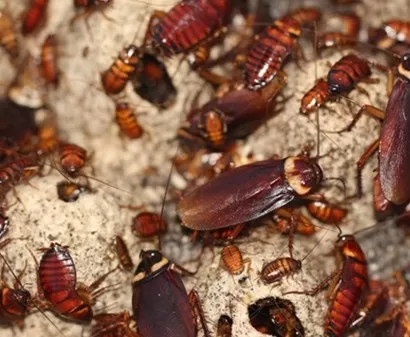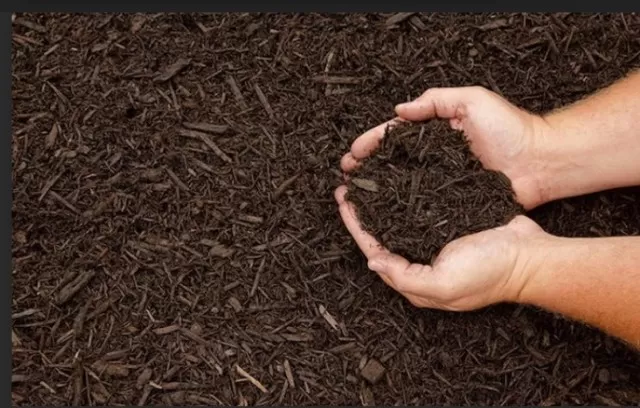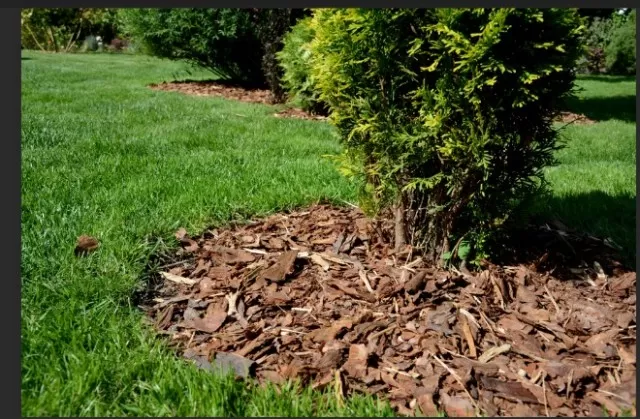Mulch & Termites: Solved! Do They Attract Each Other?. Choosing the right type of mulch can potentially discourage termite activity. Some mulches are treated or made from materials that are less appealing to termites, such as rubber, gravel, or certain types of stone. These alternative mulches can create a physical barrier or unfavorable environment for termites, making them less likely to establish colonies near the house.
Additionally, proper landscaping practices can help minimize the risk of termite infestations when using mulch. Here are some tips to consider:
Mulch: Creating an Ideal Habitat for Termites without Directly Attracting Them to Homes

Experienced gardeners know all too well that shoveling becomes significantly more arduous when faced with hard, dry soil as opposed to damp ground.
Similarly, termites, the diligent tunneling insects, are more likely to establish their nests beneath mulch due to the favorable soft conditions that make digging effortless.
Contrary to popular belief, there is no conclusive evidence suggesting that the moist conditions of mulch attract termite foragers from the surrounding areas.
Instead, when termites chance upon a suitable environment during their exploratory wanderings, they are more inclined to stay and feed in that area, enticed by the convenience it offers.
Therefore, rather than focusing solely on identifying termite activity within the mulch itself, it is crucial to inspect the areas beneath and around the mulch for signs of infestation.
Indications that termites might be present include the presence of mud tubes on foundation blocks, accumulations of shed wings, and sightings of flying insects resembling ants. If any of these signs are observed, it is advisable to seek professional assistance from reputable termite companies like Terminix, who specialize in termite extermination.
By understanding that mulch creates an environment conducive to termite habitation without directly attracting them to homes, homeowners can take proactive measures to monitor for termite activity and promptly address any potential infestations, ensuring the protection of their property.
Termites and Mulch: Unlikely Food Source Despite Occasional Encounters in Store-Bought Bags
According to a comprehensive termite study conducted by the University of Maryland, termites exhibited better survival rates when provided with laboratory-controlled white birch as their primary food source, as opposed to eucalyptus, hardwood, or pine bark mulch.
This finding led researchers to conclude that although termites are occasionally discovered in wood chip mulch, it is unlikely that they heavily rely on organic wood-based mulches for sustenance.
In essence, termites struggle to thrive solely on a diet of mulch.
This observation aligns with the findings of the University of Kentucky Cooperative Extension, which concurs that termites have a preference for higher-quality wood, such as construction debris buried in backfill. Therefore, if termites are present in the vicinity of your home, it is important to consider other potential factors such as buried rubble left behind by the builders of your house.
Additionally, termites may also be found in materials like railroad ties or landscape timbers frequently used as garden borders.
While encountering termites in store-bought bags of mulch can be disconcerting for gardeners, it is crucial to recognize that mulch is not their preferred food source.
Understanding that termites are more likely attracted to construction debris or certain types of wood helps homeowners focus their attention on addressing the underlying issues that may contribute to termite infestations. Regular inspections, proper disposal of construction waste, and seeking professional advice from pest control experts can go a long way in safeguarding homes against termite damage.
Varied Termite Resistance Among Different Types of Mulch

When it comes to mulch, not all varieties are equally appealing to termites.
Understanding the relationship between specific types of mulch and these pests can help homeowners make informed choices to minimize termite infestations.
Melaleuca (Paper Bark): A study conducted by the University of Florida revealed that termites can feed on almost any mulch if necessary, but they showed a strong aversion to melaleuca mulch.
In fact, less than 15 percent of termites survived when exposed to its heartwood, making it one of the most termite-resistant mulches available. As a result, melaleuca mulch is a recommended choice for use around homes.
Cypress Heartwood: Similar to melaleuca, cypress heartwood demonstrated termite resistance with less than 15 percent of termites surviving on it.
However, it’s important to note that most cypress mulches on the market consist of sapwood rather than heartwood, and approximately 77 percent of termites were able to survive on cypress sapwood.
Pine Straw: Although pine straw mulch, which consists of dried pine needles, is often suggested as an alternative to wood mulch, its termite resistance did not fare much better than cypress sapwood in the aforementioned study.
Cedar: The question of whether termites consume cedar mulch remains somewhat uncertain.
A University of Hawaii study reported “highly variable” results for western red cedar, indicating that termite resistance in cedar mulch is dependent on several factors. However, the study did suggest a moderate correlation between termite resistance and the redness of the cedar.
Considering the varying degrees of termite resistance among different types of mulch, homeowners can make informed decisions when selecting mulch for their gardens and landscape.
Opting for mulches like melaleuca and cypress heartwood, which have demonstrated higher termite resistance, can help mitigate the risk of termite infestations. However, it is important to note that no mulch is entirely immune to termites, and additional preventive measures, such as regular inspections and maintenance, are still essential for protecting homes from these wood-destroying insects.
Creating a Protective Barrier: Maintaining Distance Between Mulch and Home\’s Foundation

Regardless of the type of mulch chosen, it is crucial to establish a buffer zone between the mulch and the foundation of a home.
This preventive measure helps to deter termites by avoiding the creation of a moist environment that attracts them. Here are some key considerations to keep in mind:.
Proper Sloping: The ground surrounding the foundation should slope gently away from the structure.
This slope ensures that water drains away from the house and toward the yard, reducing moisture accumulation near the foundation that could entice termites. By maintaining good drainage, the soil adjacent to the foundation remains dry, minimizing the appeal of the area for termite infestations.
Distance from the Foundation: It is essential to keep a distance between the mulch and the foundation to maintain a dry zone.
Even black mulch, which is often considered visually appealing, should be kept at least a foot away from the foundation. This distance helps to prevent moisture buildup, reducing the chances of termite activity near the home.
By ensuring that the ground around the foundation remains dry, the risk of termites seeking shelter or creating pathways into the structure is significantly reduced.
Appropriate Mulch Thickness: Avoid applying mulch excessively thick.
Termites in mulch may use it as a pathway rather than a food source. The UF/IFAS Extension in Florida advises against applying mulch more than 4 to 6 inches deep.
Excessive mulch depth can create a damp and temperate environment that is favorable for termites. Furthermore, thick mulch layers can act as a “bridge” over treated perimeters, allowing termites to bypass soil treated with termiticides and access the house directly.
Therefore, it is important to maintain a moderate thickness of mulch to discourage termite activity.
By adhering to these guidelines and creating a proper barrier between mulch and the home’s foundation, homeowners can significantly reduce the risk of termite infestations.
Regular monitoring, maintaining proper drainage, and seeking professional assistance when needed are also crucial steps in safeguarding homes against these wood-destroying pests.
*The information is for reference only.